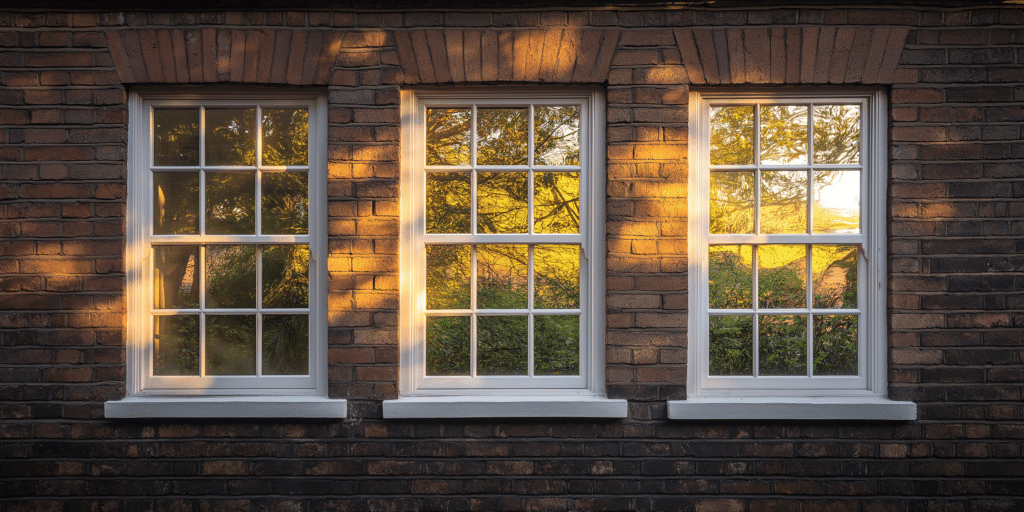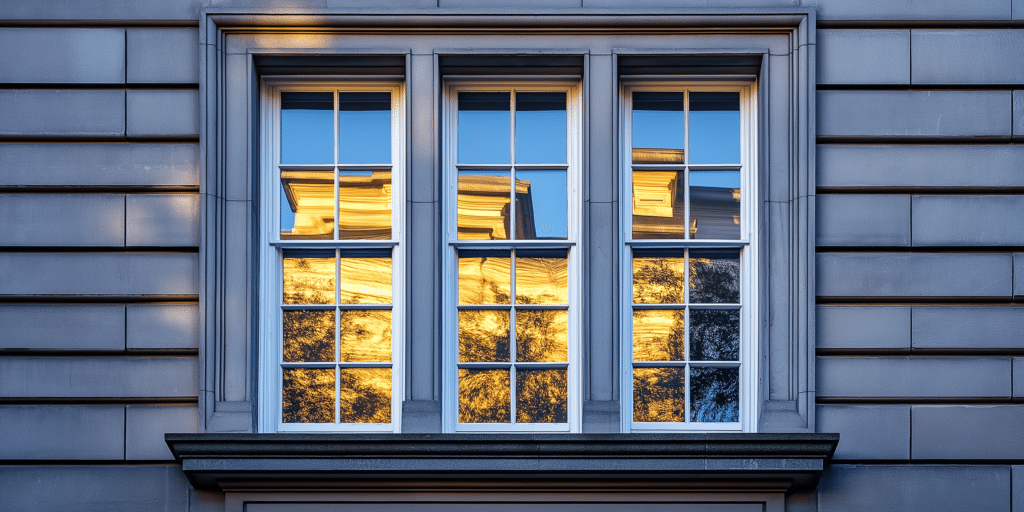What Is Sash Window Insulation Insertion?

Sash window insulation insertion applies various insulating materials within or around sash windows to increase their thermal efficiency and reduce draughts. This insulation can be critical in maintaining a comfortable indoor temperature in homes, particularly those with traditional sash windows dating back to Victorian or Georgian eras. Sash windows are notorious for allowing significant heat loss due to the gaps around the window frame and the thin glazing often used.
Can inserting insulation improve energy efficiency? Insulating sash windows help trap heat inside during colder months, reducing heating costs and enhancing overall comfort. Studies have shown that properly insulated sash windows can reduce heat loss by up to 50%, significantly lowering energy bills. Secondary glazing is also highly effective in further improving insulation without compromising the aesthetics of period windows.
Why Is Sash Window Insulation Important for Older Homes?
Older homes, particularly those with period sash windows (such as Edwardian or Victorian styles), often suffer from poor thermal performance. These windows were initially designed with minimal consideration for modern energy efficiency standards. Without sufficient insulation, up to 30% of a home’s heat can escape through these windows.
Insulating these windows retains heat during the winter and reduces the need for air conditioning in the summer, all while preserving the property’s architectural integrity. Sash window experts often recommend insulation solutions like draught-proofing strips, secondary glazing, and thermal curtains to maintain comfort without altering the appearance of historic windows.
Key Materials Used for Sash Window Insulation
Selecting the right materials is crucial to insulating sash windows, achieving both thermal efficiency and durability. Common materials include draught-proofing strips, designed to seal the gaps between the window’s moving parts, and secondary glazing, which adds a layer of glass for improved thermal insulation.
But which materials are best for your home? This depends on window size, existing draught levels, and your home’s aesthetic requirements. Eco-friendly options, such as natural wool-based or recycled foam, provide excellent insulation while reducing your carbon footprint. Some specialists recommend uPVC sash windows with advanced weatherproofing and insulation features to improve efficiency.
How to Perform DIY Sash Window Insulation

Many homeowners opt for DIY sash window insulation to save on costs and improve energy efficiency quickly. The process typically includes installing draught-proofing strips around the window edges, adding secondary glazing, or using thermal blinds.
DIY methods like weatherstripping or draught excluders can significantly reduce heat loss for those seeking a cost-effective solution. However, professional services may offer higher-quality materials and a more permanent solution for homeowners looking for a longer-lasting solution.
Professional Sash Window Insulation Services
While many homeowners successfully tackle insulation projects, hiring a professional service can provide superior results, particularly for large or complex window setups. Professional companies use cutting-edge insulation materials and methods, such as inserting weatherproof seals and applying secondary glazing that conforms to heritage window standards.
Professional insulation can often reduce draughts by 80% or more, and in many cases, the service includes a guarantee on the insulation materials and installation. This peace of mind, combined with the long-term energy savings, often justifies the investment.
Impact of Sash Window Insulation on Energy Efficiency
Proper insulation can reduce heat loss by up to 50%, significantly reducing energy bills and your home’s carbon footprint. According to experts, adding secondary glazing or applying professional draught-proofing can cut your annual heating costs by up to 20%.
When properly installed, insulating sash windows can drastically improve the U-value of your windows, which measures heat transfer. Homes with insulated sash windows often see improved thermal efficiency, contributing to energy savings and greater year-round comfort.
Sash Window Insulation vs. Window Replacement: Which Is Better?

The answer depends on factors such as your existing windows’ condition, budget, and aesthetic preferences. In many cases, insulating existing sash windows can be a more affordable solution while still delivering comparable improvements in energy efficiency to full replacement with double or triple-glazed windows.
To maintain historical authenticity, insulating original sash windows is often the preferred solution for listed or heritage properties. Experts agree that secondary glazing offers a practical compromise, delivering similar thermal benefits without altering the building’s external appearance.
Common Problems with Sash Window Insulation and How to Fix Them
While insulation offers numerous benefits, common issues, such as poor sealing or moisture build-up around the windows, may arise. For example, improper draught-proofing can leave small gaps, allowing air to leak. According to a report by Historic England, condensation is a frequently reported problem, especially when secondary glazing or poorly installed seals trap moisture between the original window and the glazing.
Ensuring the installation correctly and using high-quality materials can minimise these risks. Professionals recommend routine checks to keep seals intact and prevent moisture from accumulating, particularly in humid environments. Regular maintenance can go a long way in preventing minor issues from becoming major problems.
Sash Window Insulation Costs: A Detailed Breakdown
The costs can vary depending on the type of insulation used, the size of the windows, and whether you opt for DIY or professional services. According to the Energy Saving Trust, professionally draught-proofing sash windows cost between £150 and £300 per window, while secondary glazing can add £400 to £700 per window, depending on the complexity and size.
The complexity of the window design, materials used, and the need for specialised work (such as listed building compliance) can significantly impact the cost. On the other hand, DIY draught-proofing methods like weatherstripping or installing insulating foam cost significantly less, ranging between £50 and £100 for an entire home.
How to Maintain Insulated Sash Windows

Once your sash windows are insulated, how can you maintain them to ensure long-term efficiency? Regular maintenance checks, such as ensuring draught-proofing strips remain intact and cleaning both the windows and the surrounding insulation materials, are essential. Professionals recommend inspecting sash windows for signs of wear and tear, particularly in the seals and moving parts.
Does insulated glass require special care? Yes, especially if you’ve opted for low-E glass or secondary glazing. Insulated glass should be cleaned carefully with appropriate products, avoiding harsh chemicals that could damage seals. Proper ventilation is also important to reduce condensation risks in humid environments.
How Insulation Affects the Appearance of Sash Windows
Many homeowners worry that insulation will negatively affect the look of their sash windows, especially in period properties. But can insulation be invisible? Yes, modern insulation techniques, such as thin draught-proofing strips or secondary glazing, are designed to be discreet. Historic England confirms that well-executed insulation will not compromise the original aesthetics of period windows.
High-quality materials are designed to avoid damaging the original timber or uPVC frames. Special care is taken for historical windows to ensure the insulation does not affect the building’s appearance or integrity.
Final Thoughts on Sash Window Insulation
Whether you’re looking to save on energy bills, improve comfort, or preserve the beauty of your period property, sash window insulation offers a cost-effective and practical solution. Experts from various restoration companies have cited that the energy savings from well-insulated sash windows can often cover the initial investment in under five years.
Insulation is a wise investment for homeowners because it saves on energy bills and preserves historic features. For those with older, period homes, it provides an opportunity to blend modern energy efficiency with traditional elegance.




